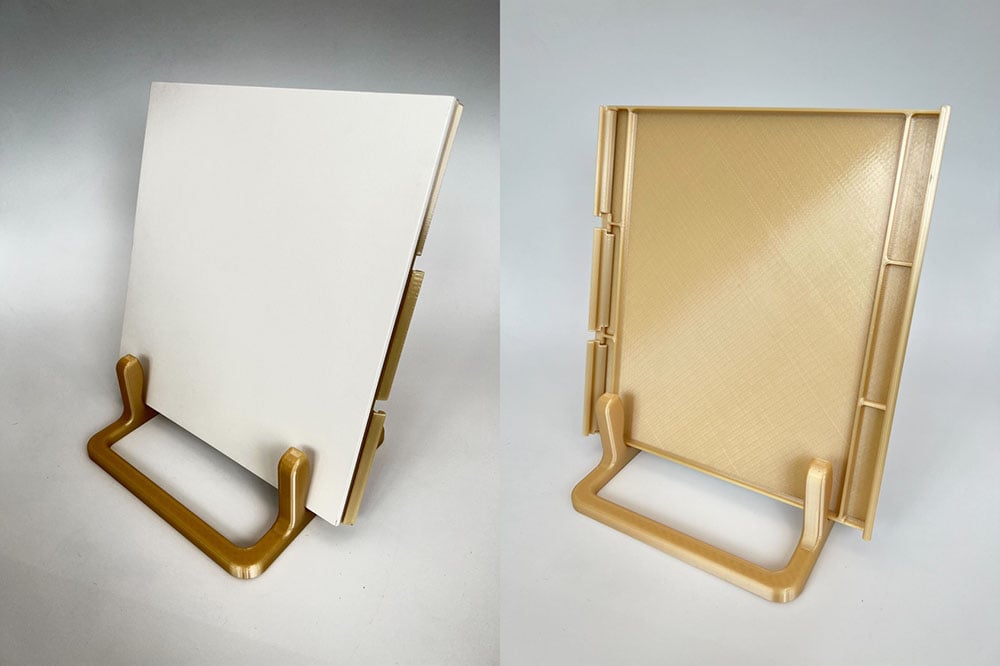
Finnair is opting for 3D printed parts to update the passenger service units in its Airbus A320 cabins. The airline is in the midst of a project that will replace heavy, outdated flip-down video monitors with lightweight, additively manufactured blanking panels produced by 3D printing specialist AM Craft.
The modification is the airline’s first to leverage 3D printing, according to a Finnair spokesperson. AM Craft designed and manufactured the blanking panels with weight savings, airworthiness and flexibility in mind under its European Union Aviation Safety Agency Part 21 G production organization approval.
AM Craft will be delivering more than 300 panels on a just-in-time basis to upgrade the cabins on 17 of Finnair’s A320s. The company says this strategy will minimize excess inventory and eliminate costs associated with the traditional supply chain.
A Finnair spokesperson says installations of the panels are taking place at selected MRO providers and within the airline’s own line maintenance operations, typically taking approximately 20 labor-hr. of work per aircraft. “We designed these parts to leverage the existing mounting rails, so installation is incredibly easy,” adds Scott Sevcik, AM Craft’s vice president of strategy and business development. “It only takes about 10 min. to swap out the old monitor for the in-fill panel, and most of that time is on the removal of the existing piece.”
“Since starting the installation campaign of the printed panels as a fleet-wide solution during the fourth quarter of 2023, the work has been progressing smoothly and on schedule thanks to the support from AM Craft,” says Totti Pekonen, Finnair’s manager of cabin and payload engineering. The airline will complete the remaining installations this year.

Sevcik notes that recent supply chain issues have increased interest in 3D printing and demonstrated an aviation business case for the technology. “Up until now, the OEMs have been adopting 3D printing for this type of need, but airlines and MROs, who are used to buying parts rather than making them, have had a more challenging time adopting the technology,” he says.
AM Craft’s Chief Commercial Officer Janis Jatnieks adds that the Finnair project demonstrates the value of additive manufacturing within the aviation sector. “As the average age of the commercial fleet continues to grow, there are many opportunities where it makes sense to redesign a part and produce only the quantity needed rather than try to leverage the long lead-times of the original source,” he says. “With additive manufacturing, we can realize great low-volume, high-mix economics, and we can often reduce part count and weight in the process.”
The blanking panels are now part of AM Craft’s digital catalog and available to any airline that requires this type of solution for A320 aircraft. The company’s primary production facility is in Riga, Latvia, but it is also partnering with Paradigm 3D in Dubai and Additive Flight Solutions in Singapore to produce these types of parts. Sevcik says AM Craft is also developing its next extended workshop site in Hamburg and it is in talks for additional sites in the Middle East and the U.S.
AM Craft has produced a variety of other 3D printed parts for aircraft, including parts for flight decks, monuments and galleys, overhead bins and seats. Sevcik says other airlines utilizing its parts include AirBaltic, Austrian and EuroAtlantic.
Although Finnair is in the midst of cabin refurbishments on its Embraer E190 and Airbus A350-900 fleets, a spokesperson for the airline says it does not have a more comprehensive cabin modification campaign ongoing for its A320s. It is wrapping up A350-900 upgrades now, which are expected to be completed by summer, and its first renewed E190s are expected to operate at the end of this year.





